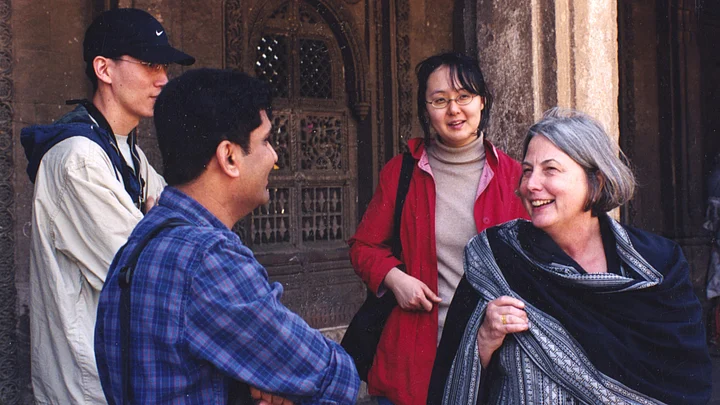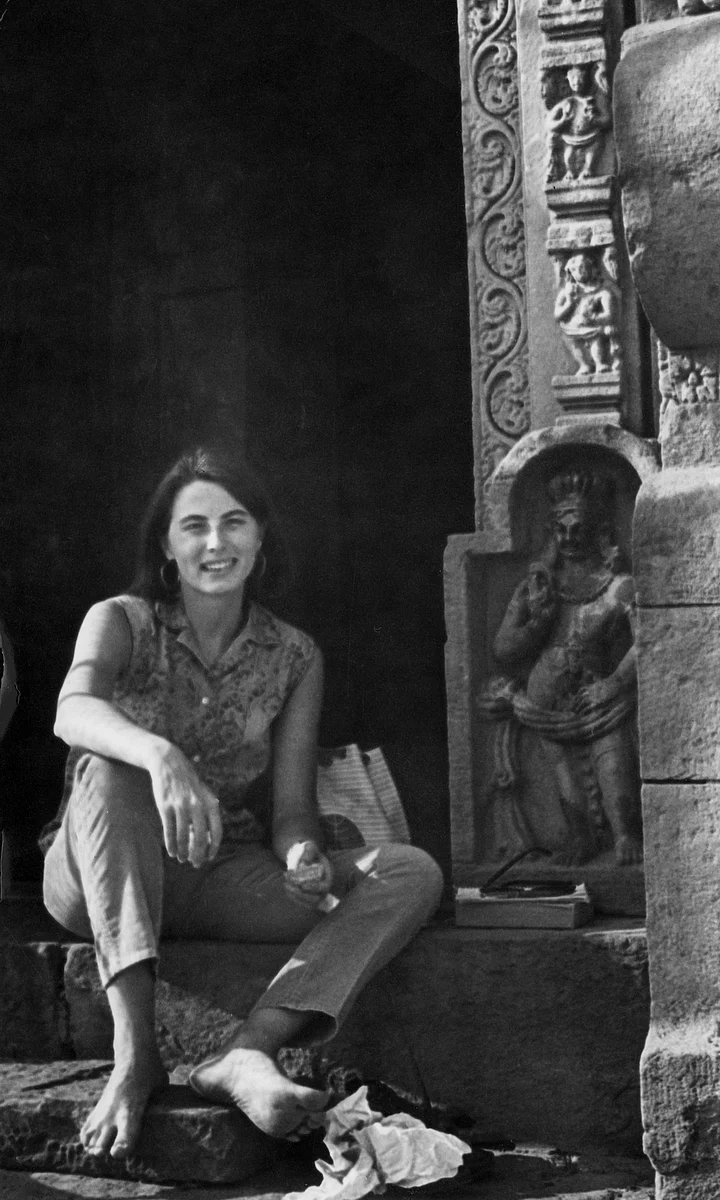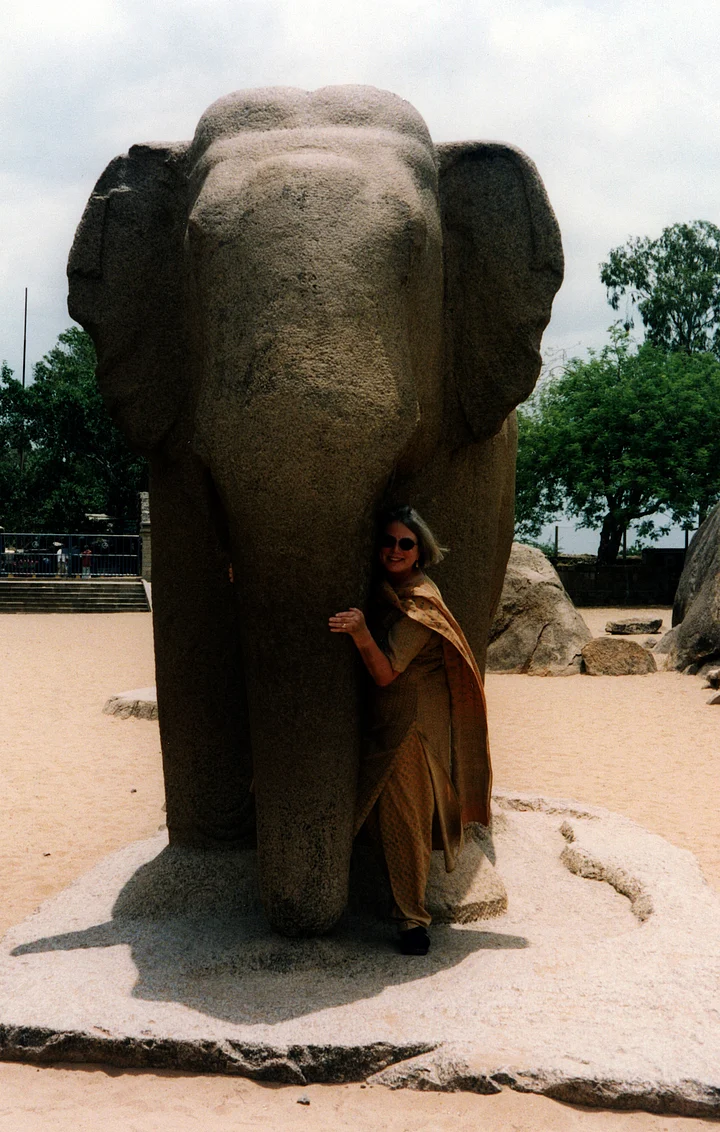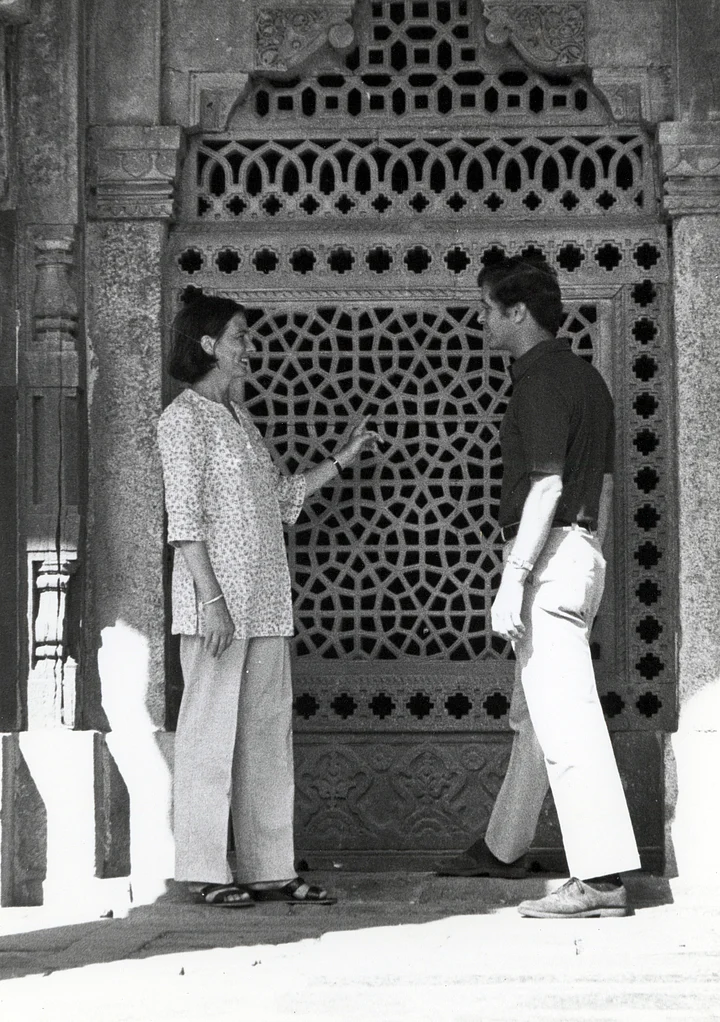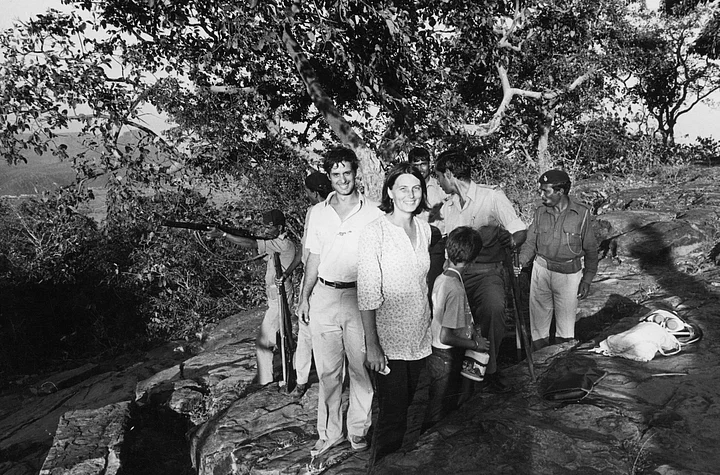At one of those academically distinguished art history seminars, my teacher, advisor, mentor, and in time, revered friend, Catherine Asher, is seated across from me. The speaker is trying to make an insightful expedition into the critical, composite visual relationships of an object or a monument, when during a moment laden with gravitas, Cathy meets my eye and winks at me. The wink is almost imperceptible but profoundly impish, and I have to summon all my restraint from cracking up into a guffaw.
On another occasion, I am seated next to her, when she slips me a hastily scribbled note at the peak of the speaker’s scholarly exposition: “This guy is boring the life out of me!”
Again, I have to make a rigorous effort not to chuckle and draw attention to myself. Repeatedly, I exhort her not to make me an unwitting accomplice in this mischief of hers but she thoroughly relishes the idea, and yet again, there is nothing for us to do but to laugh about it.
The reason I begin reminiscing about Catherine Asher through the above-cited merry interactions is to foreground two realisations about her quintessential disposition.
- 01/02
Catherine Asher was an art historian who specialised in Islamic and Indian art from 1200 to the present.
(Photo: The Bodhi Tree and the Orchid)

- 02/02
She was well known for her work on the Mughal dynasty (1526-1858). According to the University of Minnesota, her work also focused on architecture provided by Hindus, Jains, Muslims and Sikhs in cities across north India.
(Photo: The Bodhi Tree and the Orchid)

A Lifelong Learner
First, she had nothing but exasperation for the smug pretense and posturing in academia.
Second, she carried the heft of her far-ranging scholarly stature and erudition remarkably lightly, with wit, almost with a sense of a curious irony.
For her contributions to the field of art and architectural history, most pertinently to the visual culture of medieval and early modern south Asia, were quite seminal. Of course, the Mughals resided at the center of her scholarly attention, but at the outset, her work concertedly brought to light the composite dimensions of the architectural legacy of Sher Shah Suri.
Soon enough, her scholarship began to draw into its orbit the cultural expression of sub-imperial Mughal nobility, especially Akbar’s farzand Raja Man Singh of Amber, and the branching out of this expression to the Rajput successor states.
But then, it is also a measure of her versatility as an academic that she contributed monographs, articles and entries on topics ranging from the Bengal sultanate and the Qutb complex at Mehrauli to the urban formation of Jaipur and the emblematic connotations of water in south Asian Sufi shrines. This should give us a glimpse into her curiosity and openness in exploring and learning from as wide-ranging an art-historical spread as was available to her.
In fact, nowhere is her curiosity, openness, and engagement revealed more expressly than in the fact that she supervised our completely disparate doctoral projects which delved into widely varied topics ranging from the Adil Shahis of Bijapur and Ottoman hammams to Gandhian architecture, the Orient Express, and the Marinid madrasas in Fez.
- 01/03
She was interested not only in architecture but also in painting as well as luxury arts.
(Photo: The Bodhi Tree and the Orchid)

- 02/03
Some of her notable works include Architecture of Mughal India, India before Europe (co-authored with Cynthia Talbot), and Perceptions of South Asia's Visual Past.
(Photo: The Bodhi Tree and the Orchid)

- 03/03
She also served as Professor Emeritus at the Department of Art History in the University of Minnesota.
(Photo: The Bodhi Tree and the Orchid)

An Ambassador of History
And she was generous to a fault; most certainly with her students and colleagues, but also with others whose often less-than-exemplary works she readily endorsed so that her name could be used as a bond for their credibility.
Thus, all throughout the years of field-work and her annual visits to India — if I recall correctly, she said that the immediate days after her marriage were spent at an obscure temple-site in Madhya Pradesh — she steadily gained a good number of admirers and friends, primarily historians, history enthusiasts, and students.
These relationships and exchanges were also enhanced by her productive engagement, not only with other scholars in the field, but also with reputed institutions, both in the United States and India.
With the American Institute of Indian Studies in Gurugram, she had a long-standing association where she was the chair for its Center for Art and Archeology for two successive terms, and to which, she was instrumental in providing an innovative scholarly direction. The Center’s “Fredrick and Catherine Asher Archive” still holds the photographs and papers of her work.
Many Reasons to Remember Cathy
But now, at her inevitable departure decreed by time, what should one say, what can one say? I can only take immense pride in the fact that I was fated to walk a few steps with her, that just a month ago before she passed away, even in an extremely fragile state, she somehow managed to honour us with her presence at the virtual launch of a guide-book that I had co-authored.
So yet again, I celebrate her unbound generosity, her indomitable spirit, her supreme courage in face of colossal adversities. Yes, her invincible spirit and courage because one of my friends who was with her almost to her last days informed all of us that even on the day on which she departed, she was giving final touches to an article intended for a reputed art-history journal!
But now, all we can do is preserve her in our memory: her teaching, her rigour, her warmth, her generosity, her great spirit, and whatever lessons of art history and life we learnt from her. All we can do is to preserve in our memory the gatherings and parties at the Asher home suffused with sincere care, and as odd as it may sound, a boisterous grace.
For again, at this inevitable parting decreed by time, what thoughts could be adequate? Perhaps in the dissolution of her bodily form, she wanted to illuminate the delineations of history to which she dedicated her life. Perhaps she was impatient to migrate to a more radiant, more enlightened, more charitable dimension, now that her Mughals had been crudely expelled from the annals of history.
But for us and many more, she roves around in our hearts, knocks against its walls, so that the sound may reveal her lingering presence, so that along with the great Hafiz of Shiraz, we too may say that her being is: sabt ast bar jareeda-e aalam-e davaam-e maa (recorded in the chronicles of the eternal world).
And thus, as you rove in our hearts, dear Cathy, do keep in touch regularly.
(Professor Riyaz Latif is an art and architectural historian whose work addresses the intersections of literary, cultural and visual worlds. He has taught at a number of Universities in the United States, and now teaches at FLAME University at Pune.)
